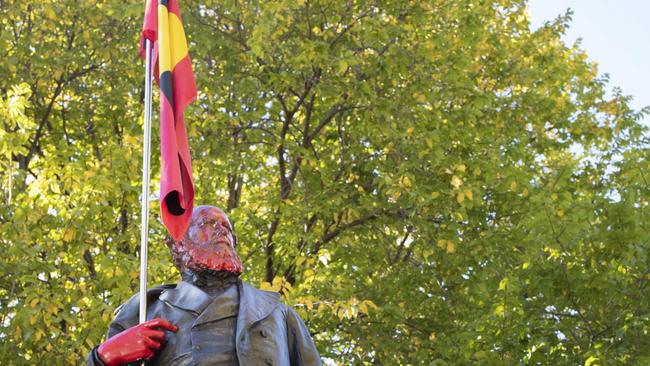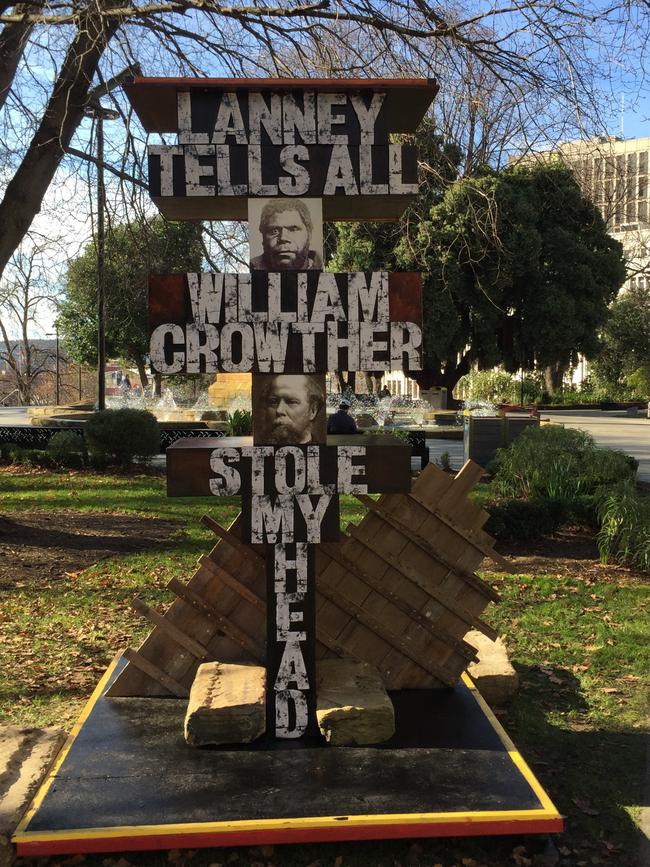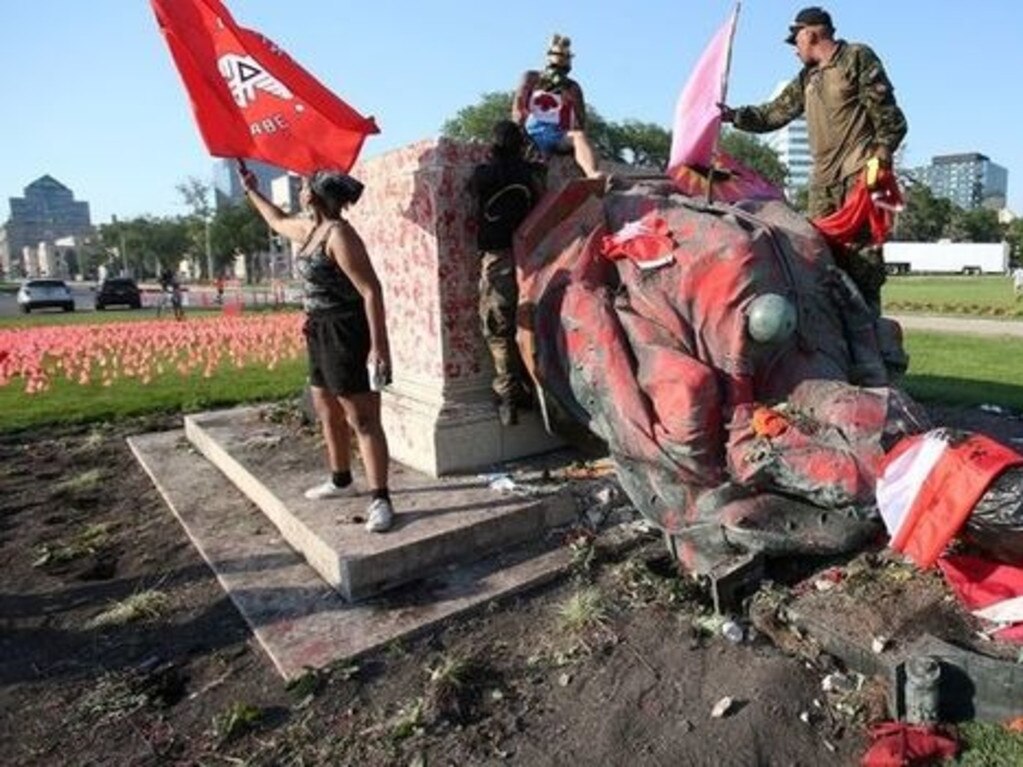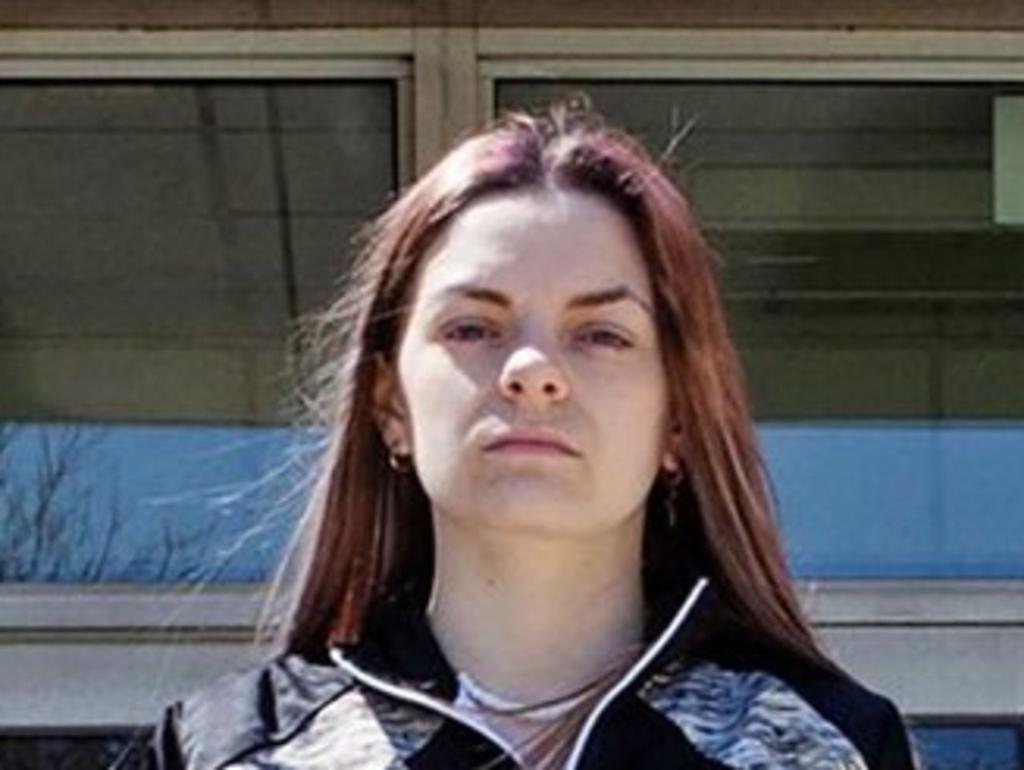Tasmania truth telling about past premier ‘misleading, erroneous’: historians
A landmark ‘truth telling’ about a controversial former premier in Hobart is anything but, according to two historians.

A landmark “truth telling” in Hobart is anything but, according to two historians who claim it seriously misleads the public about a controversial former premier.
A statue of William Crowther in Hobart’s Franklin Square is the subject of four city council-organised art installations aimed at revealing the truth about Crowther.
Controversial even in his time, Crowther was a surgeon, naturalist and premier who in 1869 severed and stole the head from the corpse of Aborigine William Lanne, also known as King Billy.
Lanne was seen as the last “full blood” Tasmanian Aboriginal man, making his skull a prize for collectors in an era when phrenology was given scientific credence. No one contests that Crowther removed Lanne’s skull.
However, two historians say the first two art installations are littered with errors or misleading statements. In the first installation, by Indigenous artist Allan Mansell and exhibited from late April to late last month, Crowther’s hands and face were painted red and an Aboriginal flag was placed in one hand and a saw in the other.
A replacement plaque read: “Crowther exhibited vile disrespect in pursuit of empty, egotistical, baseless ambition by decapitating the corpse. Lanne’s hands and feet were cut off and his bones were all taken, he was more than filleted, butchered like a beast … Lanne’s scrotum was severed and used as a tobacco pouch.”

Historian Ian McFarlane and amateur historian Scott Seymour said this gave the impression Crowther was responsible for all these crimes when he was not.
“The information contained on the statue installation purporting to be the truth is both incorrect and misleading,” Dr McFarlane said. “Crowther certainly removed the skull and must be judged accordingly, but it was (rival) Dr George Stokell who was responsible for the cutting off of the hands and feet.” Dr McFarlane said the scrotum story appeared to be an urban myth.
“It would be useful if those responsible for initiating public installations such as these with the grand and impressive titles of ‘truth telling’ to ensure that they actually do just that,” he said. “The public deserve better.”
Mr Seymour agreed. “The notion of truth telling is great, but when we have something in public that is supposed to be historically accurate, it should be,” he said.
“Stokell admitted under oath in court that he … removed the hands and feet. What Crowther did was terrible, but let’s blame him for what he did, not try to blame him for what he didn’t do.”
Mansell said his work had not explicitly attributed all the mutilations to Crowther and that it was “neither here nor there”, with the historians missing the bigger picture: the shocking mistreatment of Indigenous Tasmanians.
“It was to shock people into (thinking) ‘oh, maybe I should have a look more into what really happened’,” Mansell said.
He believed Crowther, by stealing Lanne’s head, had paved the way for later mutilations and must bear the blame, even if he didn’t perform the acts himself.
The historians also took issue with a sculpture and short film by University of Tasmania pro vice-chancellor Greg Lehman and filmmaker Roger Scholes.
Its errors, they said, included assertions Lanne was “born in the west” – a death notice says he was born in the southeast – and that he was seized by sealers due to a £50 bounty “from the government” (the money was offered by the Van Diemen’s Land Company).
Professor Lehman conceded errors might have been made and suggested the video might be amended. “If it is necessary to make some changes I would be very happy to do that,” he said.








To join the conversation, please log in. Don't have an account? Register
Join the conversation, you are commenting as Logout